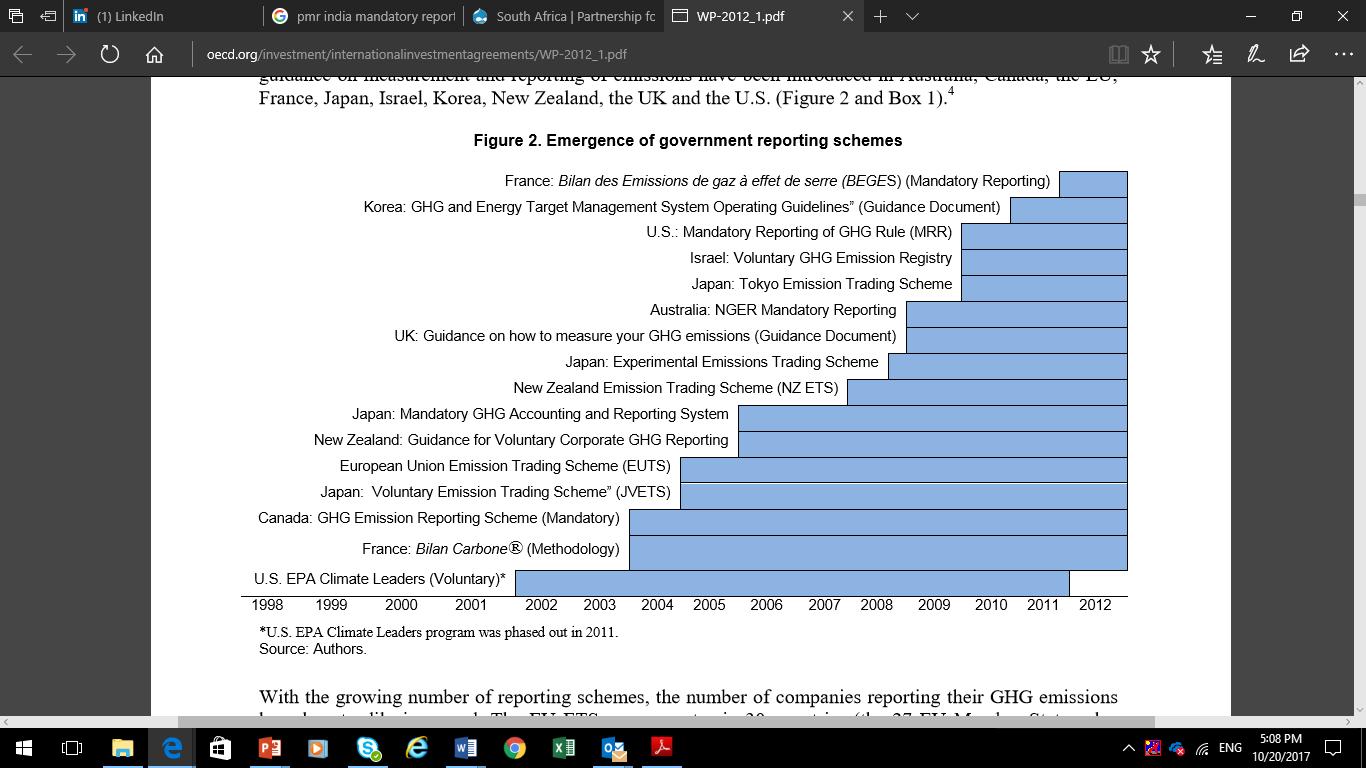
1 minute read
Motivations, Benefits and Challenges
Table of Contents
Background................................................................................................................................2 Motivations, Benefits and Challenges........................................................................................3 Review of Experiences & Learnings............................................................................................5 Building Blocks for Mandatory Emissions Reporting in India.....................................................7 Next Steps ................................................................................................................................15
Advertisement
Background Current Landscape of Mandatory Reporting. Over the past fifteen years number of national, regional and local governments have established mandates on emissions measurement and reporting. Broadly applicable to the corporate sector, mandatory emissions reporting allows policy makers to evaluate industry related climate impacts from time to time. With progress on the Paris Agreement commitments and enhanced domestic action – more than 40 countries are now relying on emissions reporting mandates to;
Continuously track progress/emissions from key sectors
Induce businesses to reduce emissions in line with nationally determined goals
Provide key background for future market based mechanisms
Access economy-wide climate risks and provide guiding framework for financial institutions For India to explore the possibility of designing and implementing a mandatory emissions reporting scheme for corporates – this discussion paper outlines key considerations that can be made, based on learnings from other geographies on the benefits as well as challenges. The paper also attempts to outline building blocks for ensuring effective implementation of a mandatory reporting mechanism for corporates in India – based on successes and learnings existing mandates. Since the late 1990’s number of mandatory or voluntary government schemes have emerged, with reporting requirements either merged as a part of environmental or financial disclosures, separate policy instruments, listing requirement of stock exchanges etc. Figure 1, highlights timelines of GHG reporting schemes as implemented across a range of OECD countries
Figure 1: Emergence of GHG Reporting Globally
Source: OECD. *US EPA Climate Leaders Program was phased out in 2011.



